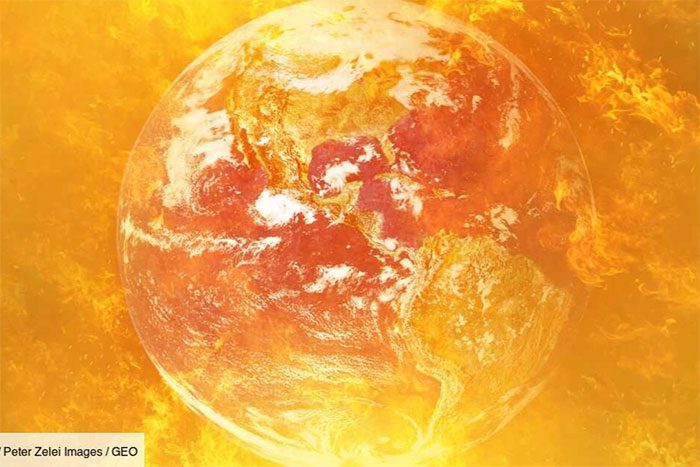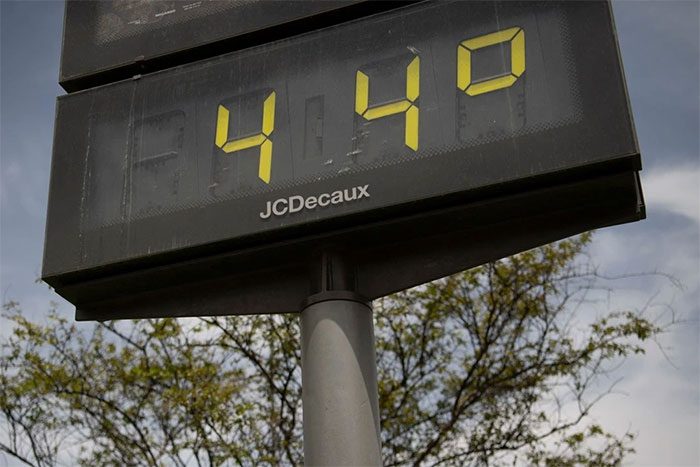The consequences of global warming exceeding 1.5°C compared to pre-industrial levels pose a significant threat to human health and render many regions of the planet uninhabitable.
Since the onset of fossil fuel combustion during the Industrial Revolution, global temperatures have risen by approximately 1°C.

Global temperatures are rising, forcing countries to rapidly transition their energy sources to mitigate this issue. (Illustration: Geo).
In 2015, 196 countries signed the Paris Agreement aiming to limit global temperature rise to 1.5°C above pre-industrial levels.
Everywhere, climate change is causing certain disturbances that can be anticipated to some extent. Among the most visible consequences of this issue are the increasing frequency and intensity of wildfires, heatwaves, extreme heat, and floods, which even threaten agricultural productivity.
The repercussions may lead to reduced agricultural yields, increased water stress, and even food security crises.
A recent study published in the U.S. journal PNAS warns that one day some regions of the world could become uninhabitable for humans.
Increased Stroke Rates Due to Climate Change
Researchers estimate that global warming exceeding 1.5°C compared to pre-industrial levels will cause increasingly severe damage to human health.

Residents of the Indus Valley, India, will be unable to stay if temperatures in the region exceed 2 degrees Celsius above pre-industrial levels. (Illustration: Science et vie).
According to this hypothesis, billions of people will face extreme heat and humidity every year, and the human body cannot adapt to the prolonged combination of these two factors. This can lead to reactions such as heat exhaustion and heart attacks, resulting in strokes that could be fatal.
Scientists have modeled global temperature increases ranging from 1.5°C to 4°C, a threshold that could be reached if global warming accelerates. They then identified regions of the planet where climate change would result in temperatures and humidity levels exceeding human limits.
Temperatures Exceeding Human Tolerance
According to research published by researchers from Pennsylvania State University in 2022, the environmental temperature limit of the “wet bulb”—a term referring to the temperature of air saturated with moisture—for younger and healthier individuals is around 31°C.
However, beyond temperature and humidity, the specific threshold for each individual at any given moment also depends on their level of acclimatization. Environmental factors such as solar radiation and wind speed will also impact our health.
The researchers emphasize that the fact that temperature and humidity exceed human limits has only been recorded a few times in human history, occurring only for a few hours in parts of Southeast Asia and the Middle East.
If global temperatures rise 2°C above pre-industrial levels, many Pakistanis will experience several hours of extreme heat each year, surpassing human tolerance.

Last summer, many cities around the world recorded record high temperatures for extended periods (Illustration: Le Figaro).
The same situation applies to the population in the Indus Valley (India), 800 million people in Sub-Saharan Africa, and billions in eastern China.
These regions will endure extremely humid heatwaves. Researchers indicate that these conditions could be particularly dangerous for our health as air cannot absorb excessive moisture.
Low-Income Countries Heavily Affected
The results indicate that these areas are largely in low- or middle-income countries. This means that those affected by the impacts of global warming may not necessarily have air conditioning or any means to mitigate the effects of heat.
The final hypothesis posits that if global warming reaches 3°C above pre-industrial levels, temperatures and humidity exceeding human tolerance will impact the eastern and central coasts of the United States, from Florida to New York, Houston to Chicago, Australia, and South America.
Climatologist Daniel Vecellio confirms the highlighted results of the research: “These models are effective in predicting trends, but they do not allow us to predict specific events.”
To support his argument, he referenced the heatwave that hit Oregon, resulting in over 700 deaths in 2021.


















































